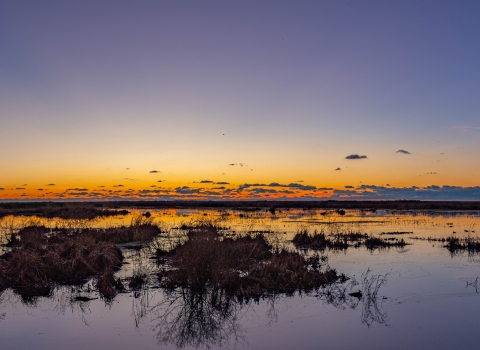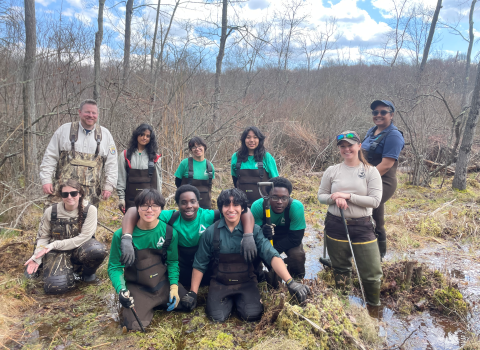Scientists and imaging specialists have teamed up to help save one of the world’s most endangered groups of animals: freshwater mussels. With funding provided by the U.S. Fish and Wildlife Service’s National Conservation Training Center (NCTC) and the Chesapeake Bay Foundation, imaging experts will create 3D shell models of specimens from the Florida Museum of Natural History and the Smithsonian Institution’s National Museum of Natural History. Once complete, the models will be freely available online to educate the public about these amazing yet little-known creatures that dwell in rivers and streams across the United States. The models will also be used to train conservation biologists to identify all 300 freshwater mussel species found in the United States.
Revolutionizing Freshwater Mussel Conservation through 3D Modeling
NCTC will create 3D prints of the shell models to enhance their Freshwater Mussel Identification Course, which they offer to conservation professionals across the country. The 3D models will also form the basis of an online course, allowing participants to virtually inspect specimens and learn to distinguish their unique characteristics. “This project is very exciting because it provides opportunities to teach field biologists and the public how to identify all of the freshwater mussel species native to the United States, especially with nearly 100 species listed as threatened and endangered,” said Matthew Patterson, Course Leader with the Service’s National Conservation Training Center. “And all of this is happening in 2023 as the Endangered Species Act is turning 50 years old.”
Mussels are essential to the health of streams and rivers. They filter algae, excess nutrients, and heavy metals from their surroundings and stabilize streambeds by forming dense colonies. They’re also an important source of food for other animals, including fish, mammals, and birds. But years of widespread pollution, overharvesting and dam construction have imperiled freshwater mussel populations. State and federal agencies have placed a strong emphasis on evaluating populations and establishing regulations to safeguard species at risk of extinction. Before agencies can take stock of mussel diversity, staff must first know how to distinguish between species, a skill they develop by observing live specimens or training with reference shells.
As mussel populations decline, however, reference specimens become increasingly harder to come by. For the rarest species, the only available shells are stored in museums where they are carefully curated and seldom handled, which makes them unsuitable for training. Instead of handling rare and delicate specimens, a digital 3D library would improve access to specimens by putting all U.S. species directly at our fingertips.
Building a Complete Collection
The Florida Museum and the Smithsonian will collaborate to create a complete library of mussel biodiversity through 3D modeling. The use of photogrammetry helps visualize a specimen’s external features and color in 3D. The Florida Museum operates a fast and efficient photogrammetry rig, which transforms two-dimensional photographs of a specimen into a three-dimensional model. The rig can take up to 432 images of an individual specimen in 10 minutes or less.
Specimens will be photographed and digitized at the Florida Museum and uploaded to an online digital repository that allows users to access free 3D models. Visit the Freshwater Mussels of America Collection of 3D Models to see several mussel specimens that have already been digitized.
This year marks the 50th anniversary of the Endangered Species Act (ESA). Throughout the year, the U.S. Fish and Wildlife Service is celebrating the ESA’s importance in preventing imperiled species extinction, promoting the recovery of wildlife and conserving the habitats upon which they depend. The ESA has been highly effective and credited with saving 99% of listed species from extinction. Thus far, more than 100 species of plants and animals have been delisted based on recovery or reclassified from endangered to threatened based on improved conservation status, and hundreds more species are stable or improving thanks to the collaborative actions of Tribes, federal agencies, state and local governments, conservation organizations and private citizens.
Note: There are many who contributed to this article including: Zachary Randall and Jerald Pinson from Florida Museum of Natural History, John Pfeiffer from Smithsonian Institution, Matthew Patterson from U.S. Fish and Wildlife Service’s National Conservation Training Center and Kenny Fletcher from Chesapeake Bay Foundation.
Catherine Blalack, National Conservation Training Center, Headquarters








